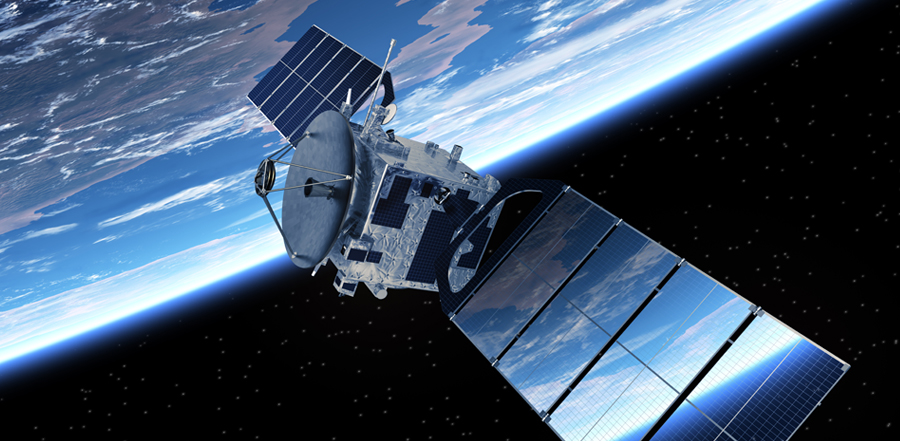7 FAQs About Small Satellite Constellations in the Low Earth Orbit


What is LEO?
LEO (Low Earth Orbit) is a new “space,” no pun intended, in terms of altitude (500 to 2000 KM / 300 to 1,200 miles) and applications (Remote Sensing & Communications). To put it in perspective, the ISS (International Space Station) is also in the LEO space. LEO is ideal because of its orbital inclination – think about how different seats in a theatre provide different perspectives on performance – each valuable for different reasons.
What are Satellite Constellations and why are they needed?
A swarm (<100 to 1000s) of small (less than 500KGs / 1,000LBs) satellites designed specifically to provide true global internet network coverage and or support telecommunications networks. And why do we need to use space for global coverage when we have high-speed internet already? Currently, the data is carried/transferred via long-haul transcontinental cable networks. The physical nature of data being carried through these cables presents two huge hurdles – First, the amount of effort and cost to lay these underwater cables spanning continents. And then the speed at which these cables are able to transfer data, AKA latency. Consequences are that the physical installation poses limitations on their reach for a true global network and in today’s day and age of Big Data, the latency can potentially cost a fortune – think about the commercial transactions at a global scale – trillions of dollars back and forth every day on the stock exchanges for example!
What do the LEO constellations promise?
The networks of these small satellites are designed specifically to take away the physical nature of transcontinental cables and as such, reduce the latency significantly. To put it perspective, transcontinental cables between NYC and London run on a latency of 58 milliseconds. SpaceX’s Starlink satellites have already validated 44 milliseconds as they continue to bring it further down to 33 milliseconds. Every millisecond counts, time really is money. The wireless connectivity also provides a true global coverage because of their vantage point, a direct line of sight. One small satellite at an altitude of 550 km (~340 miles), roughly covers an area of 1.05 million square kilometers (~652439 sq. miles) of land.

Aren’t satellites super expensive?
Well, yes, they have historically been super expensive to make and even more so to send them to orbit. Advancements, such as reusable rocket technology of Falcon 9 from companies like SpaceX, have seriously brought down the costs. A traditional satellite costs between $100M to $350M and an additional $150M to $450M to launch, for a total cost of between $250M to $800M. Comparatively, a small satellite can cost between $0.12M to $50M and another $1M to $60M to launch, for a total of between $1.2M to $110M. A university and/or a small institute can now send a fully customized satellite into space for a fraction of the historic costs.
Are all small satellites the same?
No, the small satellite ecosystem segments further down into Mini, Micro, Nano, Pico, and Femto sats. The segments with the highest interest seem to be Mini Sats (communication) and the Nano Sats (remote sensing). These are the two major segments that are fully commercial, meaning private companies are leading the charge in developing everything from the structural designs and application all the way to managing full lifecycles of the satellites, including long-term cluster maintenance, replacement, and disposal.
How big is the market?
The Small Satellite value chain includes Components Manufacturers, Subsystem OEMs, Satellite Integrators, Launch Vehicles & Services, and Satellite/Constellation Operators. Additionally, SpaceX already has FCC approvals to launch 12,000 (of the proposed 42,000) of their Starlink Constellation; Amazon has approvals to launch 3,236 of their own small sat constellation, called Project Kuiper and OneWeb has approvals for 1,280 (of the proposed 48,000) of their small sats constellation.
How does Greene Tweed bring value to this ‘space’?
A significant portion of the satellite’s launch cost is driven by weight, directly correlating to fuel quantity. Through the use of non-metallics, specifically thermoplastic composites, this cost to launch can be reduced. Polymers such as PEEK are an excellent choice for this environment due to their excellent radiation resistance, thermal performance (aging, cycling, mechanical strength retention), and low vacuum outgassing characteristics. Combined with carbon fiber, PEEK-based composites further enable metallic component replacement. For more complex metallic geometries, materials such as Greene Tweed’s Xycomp® DLF composite allow for significant weight reduction in applications such as brackets, enclosures, fairings, covers, cable supports, and equipment mounts.